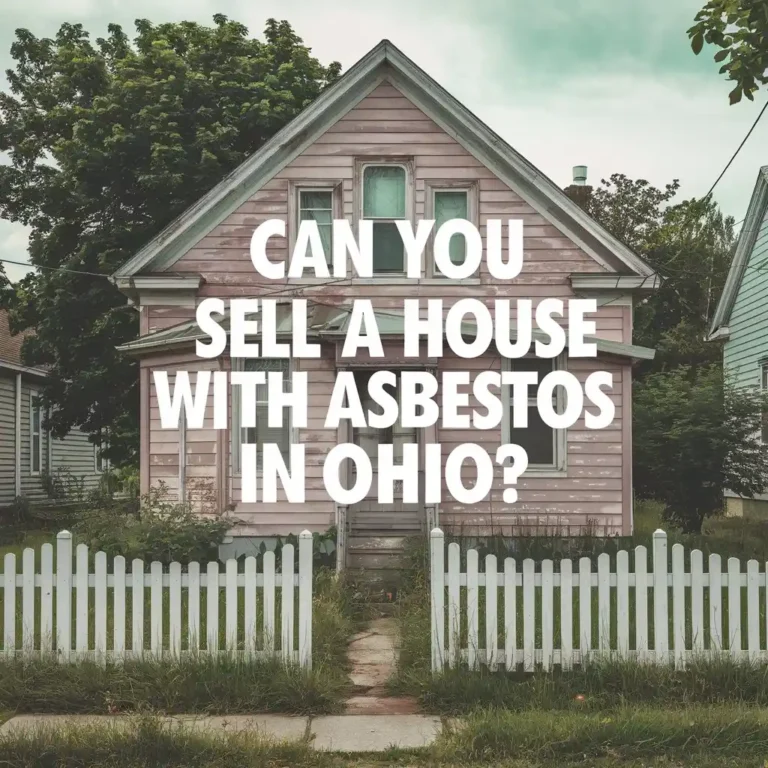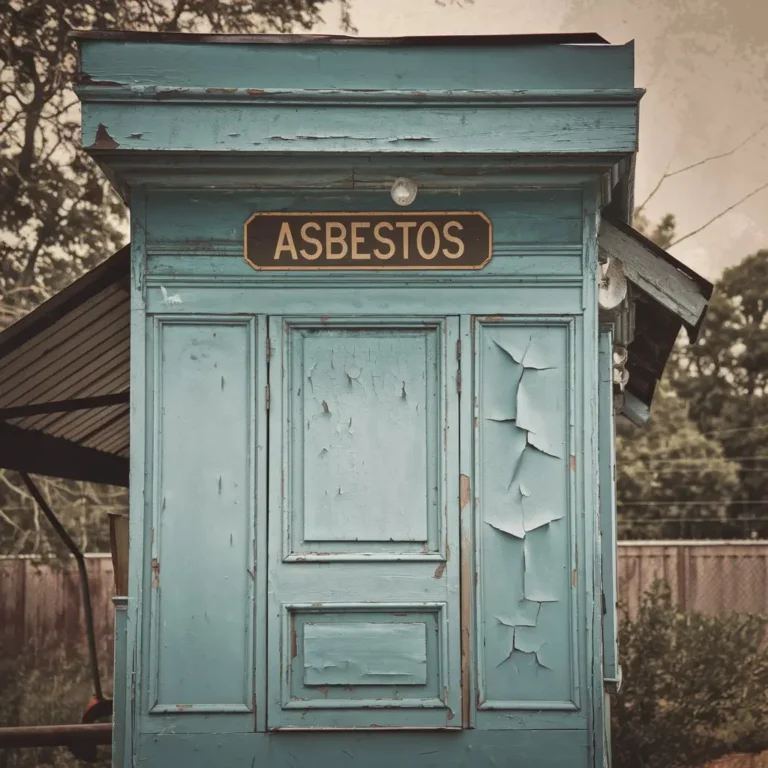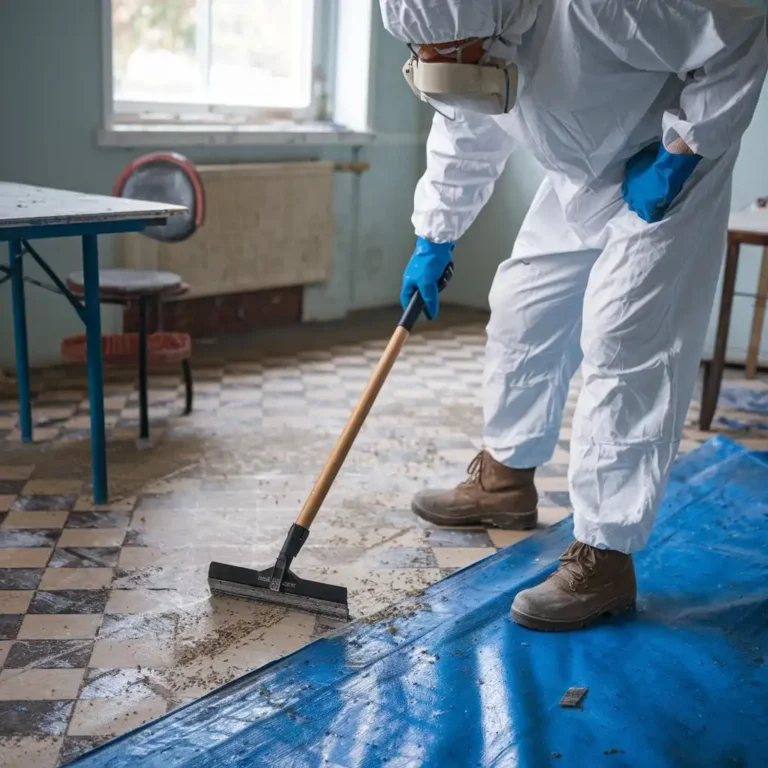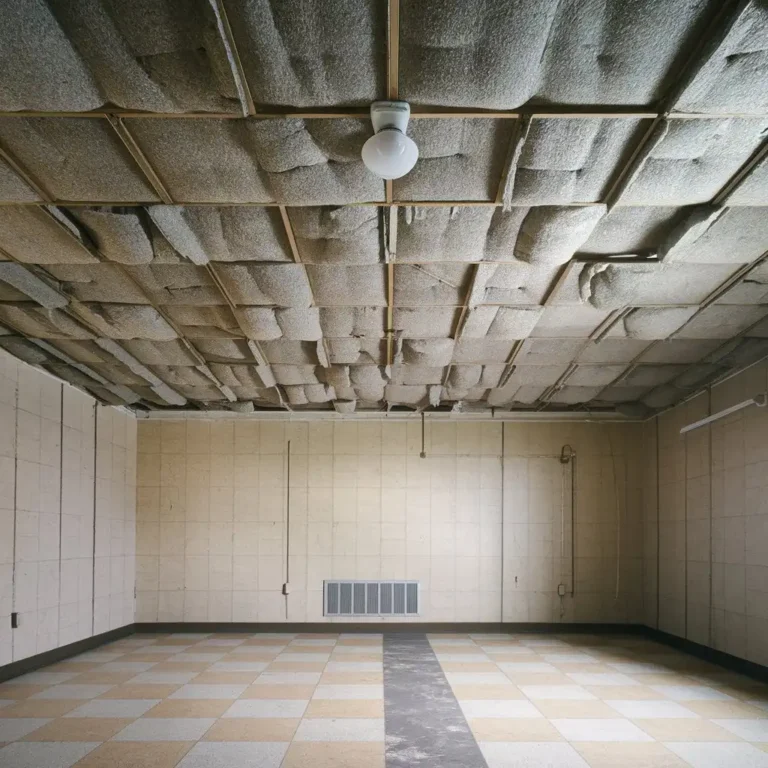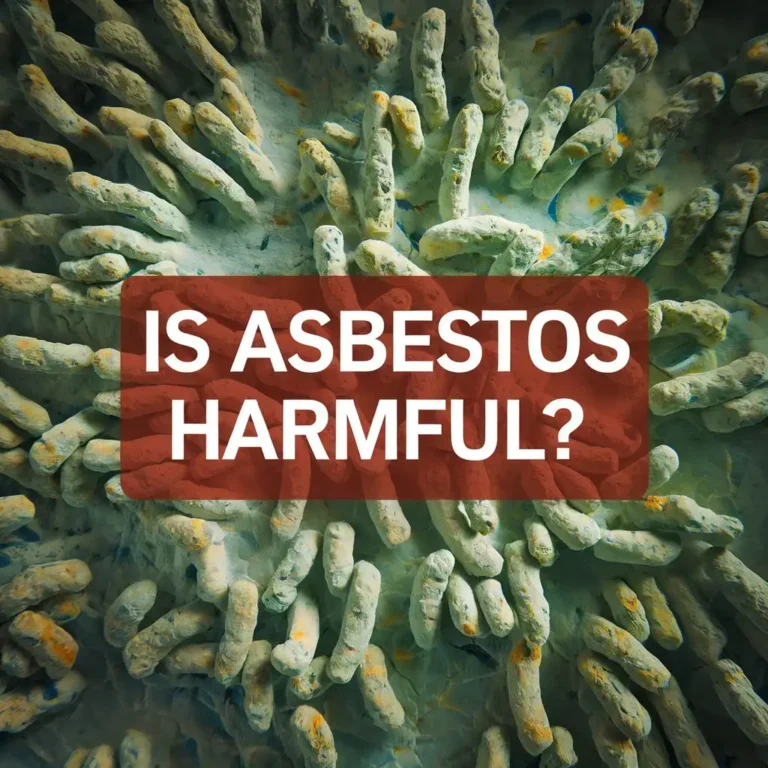What to Do if You Suspect Asbestos in Your Home
Asbestos is a hazardous material that was once commonly used in construction due to its heat resistance and durability. However, its fibers are now known to cause severe health risks, including lung cancer and mesothelioma. If you suspect asbestos is present in your home, it’s critical to take the right steps immediately. This guide outlines everything you need to know about what to do if you think there might be asbestos in your home, from identifying where it might be found to knowing when to seek professional help.
Why It’s Important to Act Quickly
When asbestos-containing materials are damaged or disturbed, they release tiny fibers into the air. These fibers can be inhaled and become trapped in the lungs, causing serious diseases over time. The risk of exposure increases if you live in an older home, especially if it was built before the 1980s. Asbestos is particularly dangerous during renovations or repairs, as these activities can easily disturb materials containing asbestos.
It’s crucial to act quickly to minimize exposure. You should avoid disturbing any suspicious materials and get professional help to confirm and remove any asbestos. The quicker you address the situation, the safer your home will be for you and your family.
Where You Might Find Asbestos in Your Home
Asbestos was widely used in homes built before the 1980s, making older homes more likely to contain asbestos. It was favored for its fire resistance, insulating properties, and durability. Common areas where asbestos may be found in your home include:
1. Insulation
One of the most common places to find asbestos is in insulation. This includes attic insulation, wall insulation, and insulation around pipes. Homes built before the 1980s may have asbestos-based insulation in these areas, which can become a serious health risk if disturbed.
2. Flooring
Vinyl floor tiles, linoleum, and their backing may contain asbestos. Asbestos was used in these materials for its durability and fire resistance. If the flooring is old or damaged, asbestos fibers can be released.
3. Ceiling Tiles and Textured Ceilings
Some ceiling tiles and textured ceilings (often called popcorn ceilings) contain asbestos. These materials were used for soundproofing and fire resistance but pose a risk if damaged or when renovations are being planned.
4. Roofing
Asbestos was commonly used in roofing materials, such as shingles, tiles, and even cement-based roofing products. If your roof is old or showing signs of wear, it’s important to have it checked for asbestos.
5. Pipes
Asbestos insulation was used around pipes, especially in homes built before the 1980s. If this material is disturbed, it can release harmful fibers.
6. Walls and Siding
Asbestos-containing materials, like cement boards, were often used as siding in homes. These materials, if damaged, can also pose a risk.
It’s essential to keep in mind that asbestos is typically not harmful unless it is disturbed. If the materials are intact and undisturbed, they generally do not pose a threat.
What Should You Do If You Suspect Asbestos?
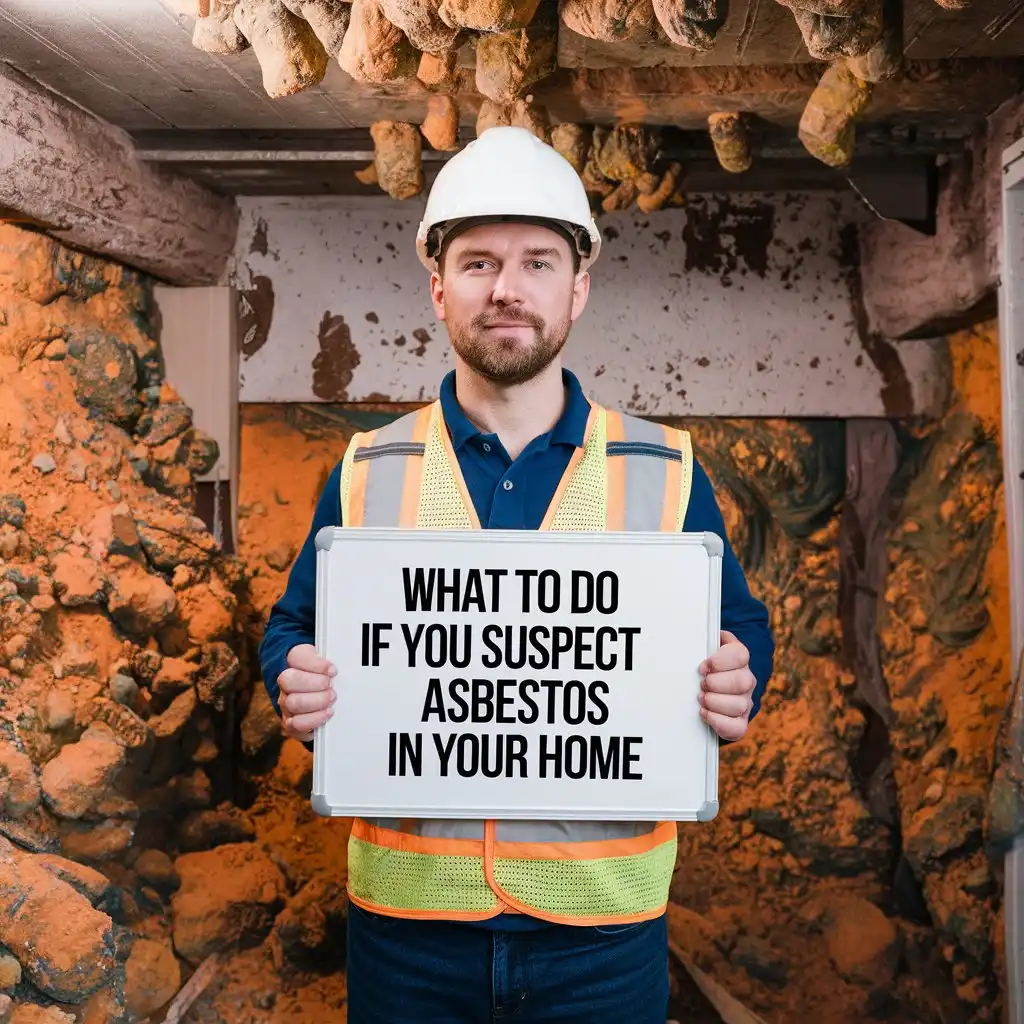
If you suspect asbestos in your home, do not attempt to handle or disturb it. Here’s what you should do instead:
1. Do Not Disturb the Suspected Materials
If you believe you’ve identified a material that may contain asbestos, the most important step is to avoid disturbing it. Disturbing asbestos-containing materials can cause fibers to be released into the air, which is dangerous to your health.
2. Seal Off the Area
To prevent accidental exposure, seal off the area around the suspected asbestos. Limit access to the area and prevent any activity that might disturb the material. Make sure no one is exposed to the fibers, especially pets and children.
3. Hire a Professional for Testing
It’s essential to have a certified asbestos professional inspect and test the material. Attempting to test asbestos yourself is dangerous. Professionals like us will carefully collect samples of the material, send them to an accredited laboratory, and ensure the proper procedures are followed.
4. Wait for Test Results
Once the samples are sent for testing, wait for the results before proceeding. If the results confirm that the material contains asbestos, don’t attempt to remove it on your own. Proper removal requires special equipment and training.
5. Call an Asbestos Removal Expert
If the material contains asbestos, hire a licensed asbestos removal expert to handle the situation. They will remove the material safely and follow all relevant regulations for proper disposal.
Tenants – What to Do if You Suspect Asbestos
If you are renting a property and suspect there is asbestos in your home, follow these steps:
1. Notify Your Landlord
Let your landlord know immediately if you suspect that asbestos is present in your rental unit. It is their responsibility to ensure that the property is safe for tenants.
2. Request Professional Testing
Ask your landlord to arrange for professional asbestos testing. The landlord should take responsibility for getting the material tested by a licensed professional.
3. Avoid the Area
If you suspect asbestos is in a certain area, avoid using that part of the house. Don’t disturb the material, and don’t allow anyone else to enter the area until it’s been properly tested.
4. Follow Up
Ensure that your landlord takes appropriate action. If asbestos is confirmed, they must hire a professional to safely remove or contain it.
Asbestos-Cement Materials: Handling and Maintenance
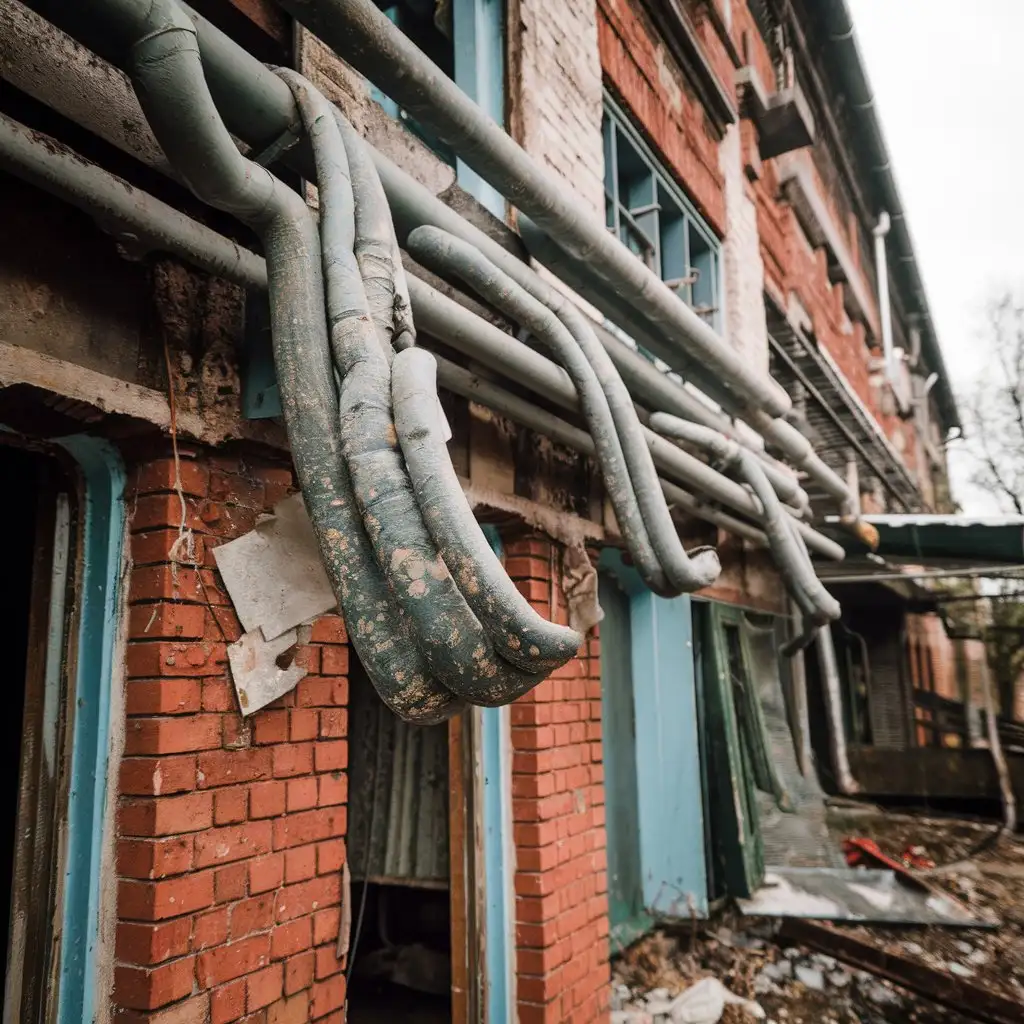
Asbestos-cement materials were widely used in homes, particularly for roofing, siding, and piping. These materials are generally safe as long as they remain undisturbed. However, if they become damaged, they can release harmful fibers. Here’s how to handle asbestos-cement materials:
1. Inspect Regularly
If your home contains asbestos-cement materials, inspect them regularly for signs of damage, such as cracks, chips, or wear. Damaged materials should be dealt with immediately.
2. Do Not Disturb It
If you notice damage to these materials, do not attempt to repair or remove them yourself. Disturbing them can release asbestos fibers into the air.
3. Hire a Professional
If asbestos-cement materials are damaged, contact a licensed professional to safely remove or repair them. Professionals will use specialized tools to handle these materials safely.
Why Hire a Professional Asbestos Removal Expert?
Handling asbestos removal requires specialized training, equipment, and knowledge of local regulations. Here’s why hiring a professional asbestos removal expert is essential:
1. Safety
Professionals are trained to handle asbestos safely. They have the proper protective gear and tools to minimize exposure to harmful asbestos fibers.
2. Proper Disposal
Asbestos must be disposed of according to strict regulations. Professionals ensure that asbestos waste is disposed of safely to prevent contamination.
3. Efficiency
Removing asbestos is time-consuming and requires careful attention to detail. Professionals have the experience and resources to do the job efficiently and correctly, reducing risks and exposure.
4. Compliance with Regulations
Local laws regulate asbestos removal to protect public health. A professional asbestos removal service will ensure all work is done in compliance with these regulations.
FAQs About Asbestos in Your Home
Q: How can I tell if my home has asbestos?
A: The only way to be sure is through professional testing. If your home was built before the 1980s, there’s a higher chance that asbestos is present.
Q: Can I remove asbestos myself?
A: No, removing asbestos yourself is dangerous and illegal in many places. Always hire a licensed professional for removal.
Q: Is it safe to live in a house with asbestos?
A: Asbestos is only a risk if it is disturbed. If the material is intact and undisturbed, it is generally safe. If you suspect asbestos, have it tested and removed by professionals.
Q: Will my insurance cover asbestos removal?
A: Some home insurance policies may cover asbestos removal if the asbestos is part of a larger claim. Check your policy to confirm.
Conclusion
If you suspect there’s asbestos in your home, the most important thing is not to panic. Take immediate steps to protect yourself and your family by not disturbing the material, sealing off the area, and hiring a professional to test and remove the asbestos. With prompt action, you can minimize the risks and ensure your home remains safe. Always rely on licensed asbestos professionals for testing and removal to ensure the proper procedures are followed. Get in touch with us now for your safety!

